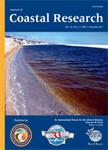版权所有:内蒙古大学图书馆 技术提供:维普资讯• 智图
内蒙古自治区呼和浩特市赛罕区大学西街235号 邮编: 010021

作者机构:Univ Porto Fac Ciencia Ctr Invest Ciencias Geoespaciais P-4169007 Oporto Portugal
出 版 物:《JOURNAL OF COASTAL RESEARCH》
年 卷 期:2011年第2011卷第10061期
页 面:44-51页
核心收录:
学科分类:0830[工学-环境科学与工程(可授工学、理学、农学学位)] 07[理学] 0707[理学-海洋科学] 0708[理学-地球物理学] 0705[理学-地理学]
主 题:remote sensing image processing beach classification aerial photographs IKONOS
摘 要:TEODORO, A., PAIS-BARBOSA, J., GONCALVES, H., VELOSO-GOMES, F and TAVEIRA-PINTO, F., 2011. Beach Hydromorphological Analysis Through Remote Sensing. In: Micallef, A. (ed.), MCRR3-2010 Conference Proceedings, Journal of Coastal Research, Special Issue, No. 61, pp. 44-51. Grosseto, Tuscany, Italy, ISSN 0749-0208. Beach hydromorphological classification is a complex subject. Different beach classification models were presented by several authors. However, fundamental parameters are usually unavailable. Therefore, a morphological analysis using remotely sensed data and image processing techniques is a good approach to identify and to classify beach hydromorphologies. Remote sensing data is an increasingly important component of natural resources monitoring programs. Its usefulness can be maximized by understanding the constraints and capabilities of the imagery and change detection techniques, related to the monitoring objectives. The aim of this study was to explore different remotely sensed data (aerial photographs and a satellite image) and different image processing algorithms in order to identify coastal forms/patterns and further classify beach hydromorphological stage. To achieve that, different image processing techniques were applied to remotely sensed data: pixel and object-based classification algorithms and a pattern recognition approach using artificial neural networks. A stretch of the northwest coast of Portugal was chosen as the study area. The data used in this study consisted in aerial photographs and an IKONOS-2 image. Based on the obtained results two main conclusions could be taken: the pixel-based classification (supervised classification algorithms) showed better results than the object-based classification algorithms;and the pattern recognition approach is the most effective and accurate methodology. Therefore, the association of remote sensing data and image processing techniques is very useful in identifying coastal forms/patterns regarding the